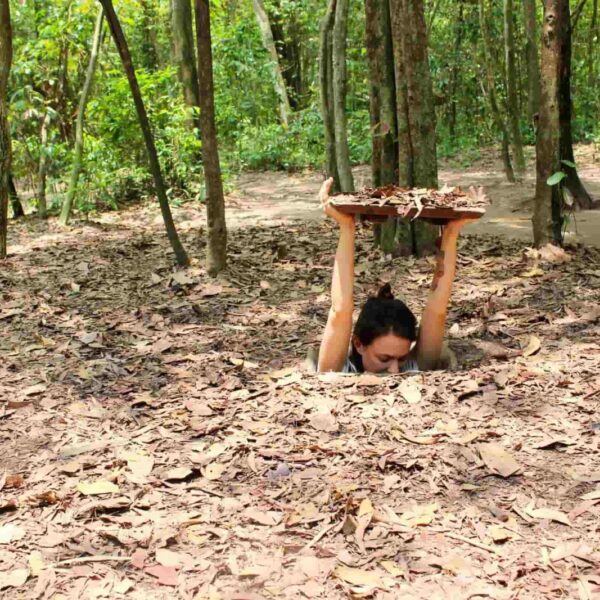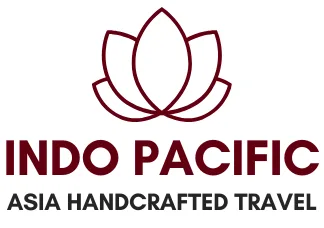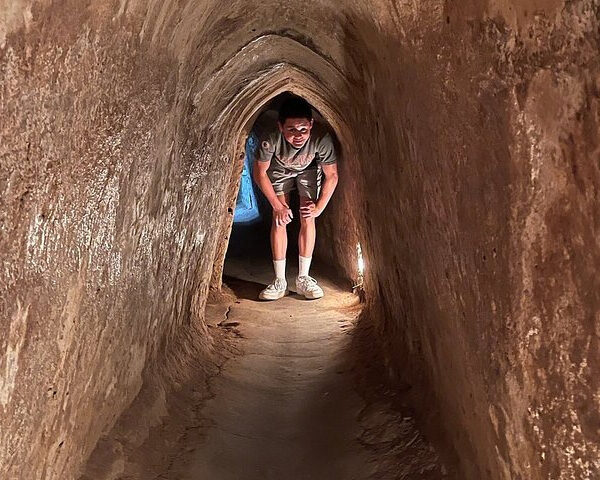article content
Discover Cu Chi Tunnels: A Complete Travel Guide for First-Time Visitors
The Cu Chi Tunnels, famously known as “The Land of Steel,” are a powerful symbol of Vietnam’s resilience and resourcefulness during wartime. Honored with the title of Hero of Labor in 2015 and designated as a Special National Historical Site in 2016, this iconic attraction draws millions of visitors every year.
Located just outside Ho Chi Minh City, the Cu Chi Tunnels offer a profound insight into the underground life of Vietnamese soldiers and locals during the Vietnam War. This guide will cover everything you need to know to plan your trip, including the tunnels’ history, visiting tips, things to do, and local foods to try.

History of the Cu Chi Tunnels
The Cu Chi Tunnels are part of a vast underground network that played a crucial role in Vietnam’s military strategy. Construction began in 1948 during the First Indochina War as a way to evade French forces. Initially, villagers dug short, isolated tunnels to hide and store supplies.
By the 1960s, during the Vietnam War, the tunnel system expanded dramatically. Each village around Cu Chi developed its own tunnels, which were later connected into an extensive, interlinked network. From 1961 to 1965, the Cu Chi district constructed the “backbone tunnel,” which connected branch tunnels across hamlets and communes, creating a continuous underground system.
Above ground, the tunnels were part of a heavily fortified guerrilla warfare zone complete with trenches, booby traps, and minefields—all cleverly camouflaged. Underground, they functioned as living quarters, command centers, first-aid stations, and even battlefields.
Inside the Cu Chi Tunnels
At their peak in 1965, the tunnels stretched over 200 kilometers (125 miles). Today, about 120 kilometers (75 miles) remain preserved, with only a portion accessible to tourists.
Built into solid clay soil, the tunnels have three levels of depth:
- Level 1 (3 meters): Withstood artillery and tanks.
- Level 2 (6 meters): Deeper protection from bombardment.
- Level 3 (9–12 meters): Could endure the largest bombs.

Access points were well-camouflaged, and the system included air vents and underground wells for ventilation and water supply.
Some tunnels contained underground kitchens with a smokeless Hoang Cam stove, meeting rooms, and even training rooms with film screenings.
How Small Are the Tunnels?
The tunnels were designed for Vietnamese soldiers, so they’re extremely narrow—just 1–1.2 meters high and 0.6–0.8 meters wide. People taller than 160 cm (5ft 3in) may need to crouch or crawl. Today, certain parts have been slightly expanded to accommodate tourists.
When Is the Best Time to Explore the Cu Chi Tunnels?
Located in Cu Chi District, part of Ho Chi Minh City, the region has a tropical climate with two main seasons:
- Dry season (Nov–Apr): Best time to visit—tunnels are dry and more comfortable.
- Rainy season (May–Oct): Still visitable—tunnel entrances are protected, but expect damp walls and humid air.
Average tunnel temperature is about 28°C (82°F). Mornings are best for visits to avoid the heat and enjoy a more relaxed experience.
Cu Chi Tunnels: Directions and Transport Options
The Cu Chi Tunnels tourism center is located in Phu Hiep Hamlet, Phu My Hung Commune, about 55 km northwest of Ho Chi Minh City. You can get there via:
- Private tours with English-speaking guides (highly recommended)
- Public buses (4, 122, and 70) – expect longer travel times and transfers
- Taxi, Grab, or eco-friendly Xanh SM
Main routes include QL22 and TL15, both leading directly to the site. Visiting in the morning ensures you can return before dark.
What to Eat Near the Cu Chi Tunnels

A visit to Cu Chi isn’t complete without sampling the region’s humble yet flavorful local cuisine:
1. Steamed Cassava with Peanut Salt and Sugar
This wartime staple is still served today, symbolizing the endurance of Vietnamese soldiers. The dish features soft, chewy cassava paired with a mix of peanut salt and sugar, often presented in a traditional porcelain bowl. Some versions are topped with coconut milk for a richer flavor.
2. Beef Spring Rolls (Bò Củ Chi Cuốn Bánh Tráng)
Cu Chi is famous for tender, flavorful beef, thanks to traditional grazing methods. These spring rolls are a local specialty and can be enjoyed at Ben Duoc Restaurant, a popular spot near the tunnels.
7 Best Things to Do at the Cu Chi Tunnels
1. Explore the Tunnel System
The tunnels are open to visitors at two main locations:
- Ben Duoc Tunnels – more authentic and spacious
- Ben Dinh Tunnels – more developed for tourism
Entrance fee:
- 35,000 VND for Vietnamese
- 70,000 VND for foreigners
A typical tour starts with a brief presentation, including a map and war documentary. You’ll see artillery remnants, secret hatches, and try crawling through short tunnel segments (10m to 70m) designed for tourists.
2. Visit Ben Duoc Memorial Temple
Located near the tunnels, this memorial temple honors the 45,000+ martyrs of the region. It features:
- Tam Quan Gate
- House of Inscription with the poem Forever Remembered
- Main Temple and Nine-Story Tower with panoramic views
- 16-meter Obelisk resembling a pen writing the epic of Vietnam
3. Try Sport Shooting with Real Guns
At the Cu Chi shooting range, visitors can fire authentic weapons like the AK-47, M16, and Type 63 rifles. It’s a unique experience, especially for international travelers, and completely legal at this licensed site.
Stay tuned for Part 2 of this guide covering more things to do, practical tips, safety, and cultural insights!



